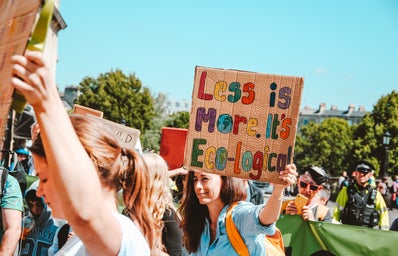So far in my fast fashion series, I’ve explored different aspects of the fashion biosphere: Tiktok influence, microtrends, the impact on the environment, and the role that LMICs (lower middle-income countries) play in all of this. As the third part of my fast-fashion series, this article will tie together all of these different topics, specifically considering the production of clothing.
When you walk into a mall and see rows upon rows of clothing, with people lining up for fitting rooms, you usually don’t take note of it, right? These products are commonly made using harmful chemicals that can cause cancer and other severe illnesses, most of which are found in the apparel sold on the market today. Prolonged contact with these materials proves to be dangerous to our health. While some have the ability to go home with their purchases and wash off these chemicals, many do not have the same privilege.
Manufacturing plants where items are mass-produced, have to deal with these chemicals through skin-to-skin contact and harmful toxins and metals that enter local water systems. Not only do fast fashion brands sacrifice human health for the sake of the production of clothing through chemical exposure, but also by perpetuating unethical working conditions. In order to keep up with microtrends and continue to produce what is in demand on the market, fast fashion companies push workers to their limit, having low wages and unreasonably long hours. These workers, often women and children, barely make ends meet with their wages with the hourly rate ranging from 33 to 58 cents an hour. Low wages paired with the unhygienic environment, 16-hour work days, and sometimes physical harassment from managers, makes going to work a risk to garment workers’ lives. These sweatshops, where production occurs, rely on the working class to function, targeting underprivileged individuals stuck in poverty.
The production of fast fashion ties together all the different issues within the fashion biosphere, environmental impacts, mass-production of microtrends, and low-income countries, to demonstrate how fast fashion goes beyond just “fashion” and is the root of numerous issues within the industry. Fast fashion sacrifices humanity for the sake of materialism and wealth. We, as a community, should start turning toward sustainable alternatives that do not put humans at risk for the sake of clothing.


